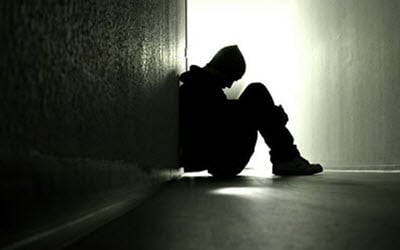NCRI – A man cut his wrist in front of a public office and died, a young woman sets herself on fire in Keshavarz Boulevard and another one throws herself from the top of a pedestrian bridge. These incidents are just some instances of suicide in public places which have taken place in recent weeks in Iran. In addition to these suicides in public, silent, hidden suicides should also be taken into account in order to determine the deterioration of the situation in society.
According to the latest statistics provided by WHO, each day 11 people attempt suicide in Iran. According to reports, 30 percent of these attempts in Iran lead to death and the most common method for committing suicide is poisoning with drugs or toxins.
Suicide causes in Iran
“environmental, family, occupational and interpersonal stressors as well as macro economical, social, political and cultural issues affect the rate of suicide attempts while macro factors such as poverty, unemployment, discrimination and class differences may help increase the suicide rate”, says a psychiatrist on the causes of suicide in Iran.
The psychiatrist adds: “different opinions have been expressed as to why people choose a specific method when attempting suicide. Issues like availability of a specific method, how lethal that method is, its prevalence and familiarity of people with it, in which the media may play a role, and sometimes the message the person intends to give with his suicide to those around him or to society, may play a role in choosing a specific method for committing suicide.”
Is suicide in public places a sign of protest against the status quo?
According to Tavakkoli, the secretary of Iran’s Psychiatrists Association, “while reflecting on the recent suicides which took place in public places, some experts believe that the suicidal person has intended to give a message to society or to speak out.” He stressed that “one of the noteworthy issues in this regard is the cultural attitude toward people who commit suicide. If someone who under the influence of various factors has attempted suicide is negatively judged and rejected, then instead of dealing with the cause we are judging and rejecting the effect and the person who is affected by those factors, the person who is affected by macro and micro factors, many of which are out of his control and while being unable to have a good long-term judgment about his life, has made such a decision.”
Tavakkoli concluded that “such rejecting attitude not only is not going to help prevent and control suicide, but it makes people who have reached to this point feel embarrassed and be unable to talk about their thoughts with those around him or with experts so as to receive their help. In addition to that, suicide, at a social level, turns into a phenomenon that its existence and dimensions are being ignored or improperly recorded and as a result, it makes its way under the skin of city as an unknown phenomenon so that we will practically be deprived of the possibility of knowing it, planning for it or intervening in it.”



